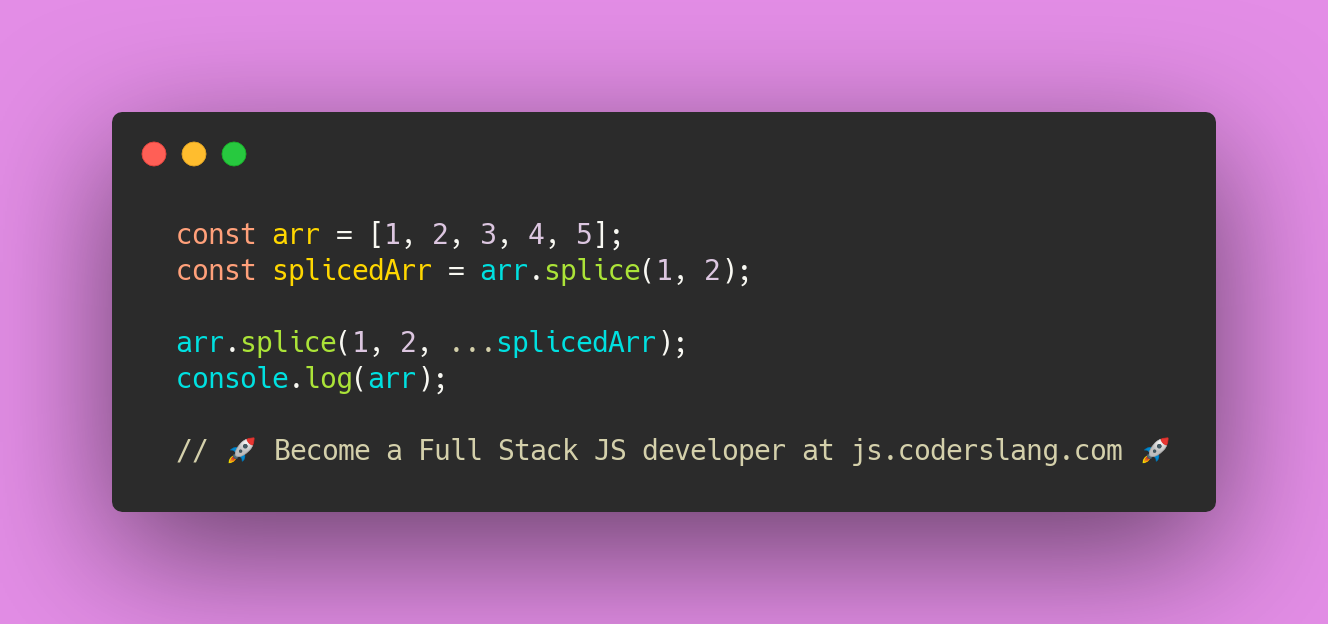
How many times can you splice the array in JavaScript?
.
.
.
.
.
.
.
.
.
.
.
.
.
.
.
.
Let’s start with the definition of splice.
The function splice is available in all JavaScript arrays and accepts the variable number of parameters. Here are 4 important things you should know about splice:
-
The first parameter is called
startand represents the index of the first element that will be removed from the array. -
The second argument is
deleteCount. It determines the number of array elements that will be removed from the array -
The third, the fourth argument, and so on, are the new elements that will be added to the array.
-
The function
splicereturns the array formed by deleted elements.
Now, we start the array arr with 5 elements [1, 2, 3, 4, 5].
The first splice extracts 2 elements starting from arr[1]. We immediately save them into the splicedArr.
Before the final splice we have the following state:
[ 1, 4, 5 ] // arr
[ 2, 3 ] // splicedArr
The second splice once again removes 2 elements from arr starting at arr[1]. This leaves us with a single element — 1.
Then, we apply the destructuring with ... to the splicedArr and add elements 2 and 3 to the initial array arr.
Here’s the code snippet with 2 additional calls to console.log to help you understand the explanation better:
const arr = [1, 2, 3, 4, 5];
const splicedArr = arr.splice(1, 2);
console.log(arr); // [ 1, 4, 5 ]
console.log(splicedArr); // [ 2, 3 ]
arr.splice(1, 2, ...splicedArr);
console.log(arr);
ANSWER: the array will eventually hold values [ 1, 2, 3 ] which will be logged to the console.